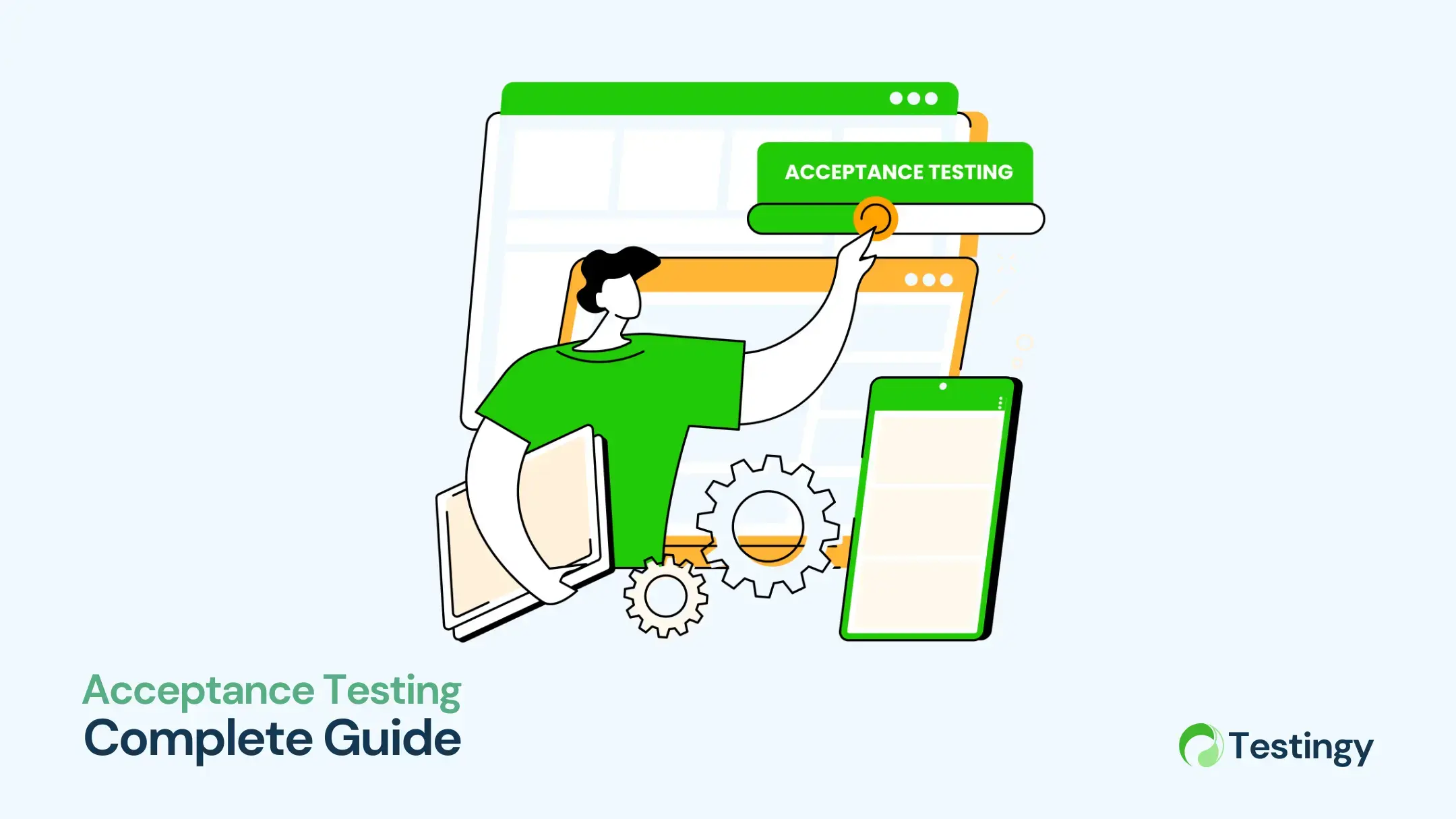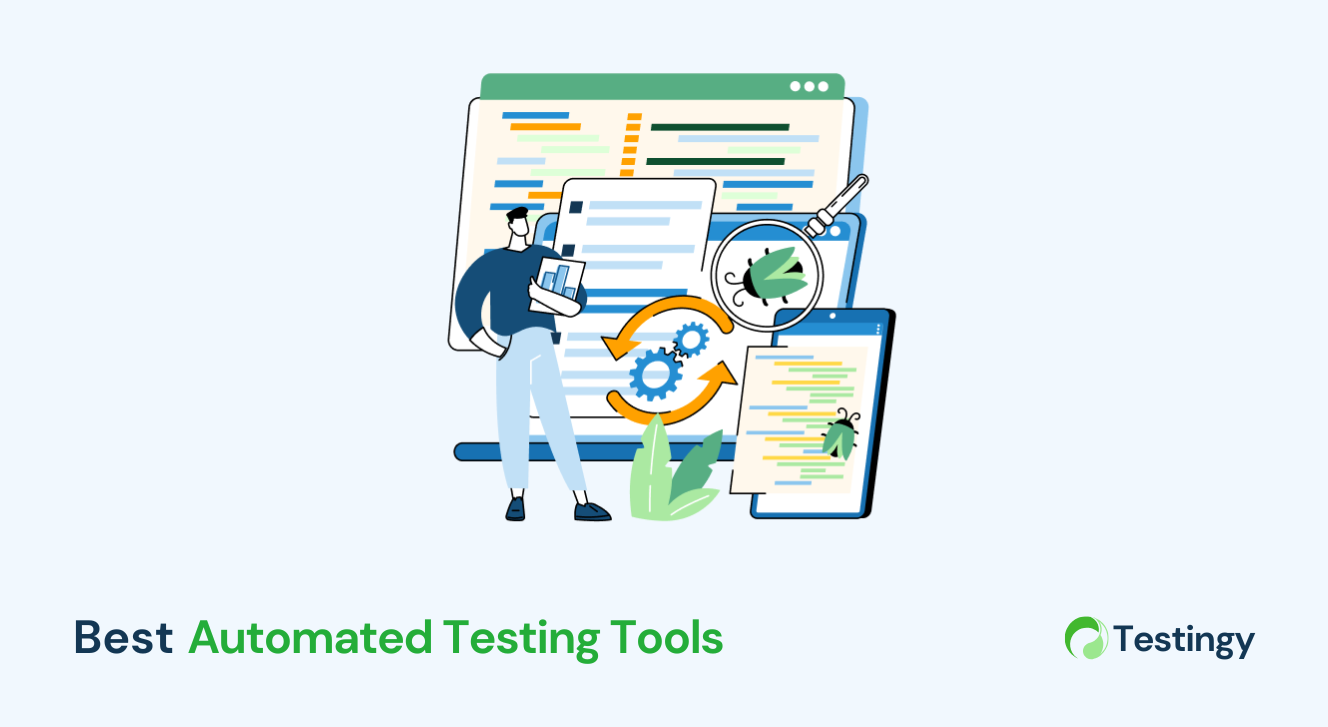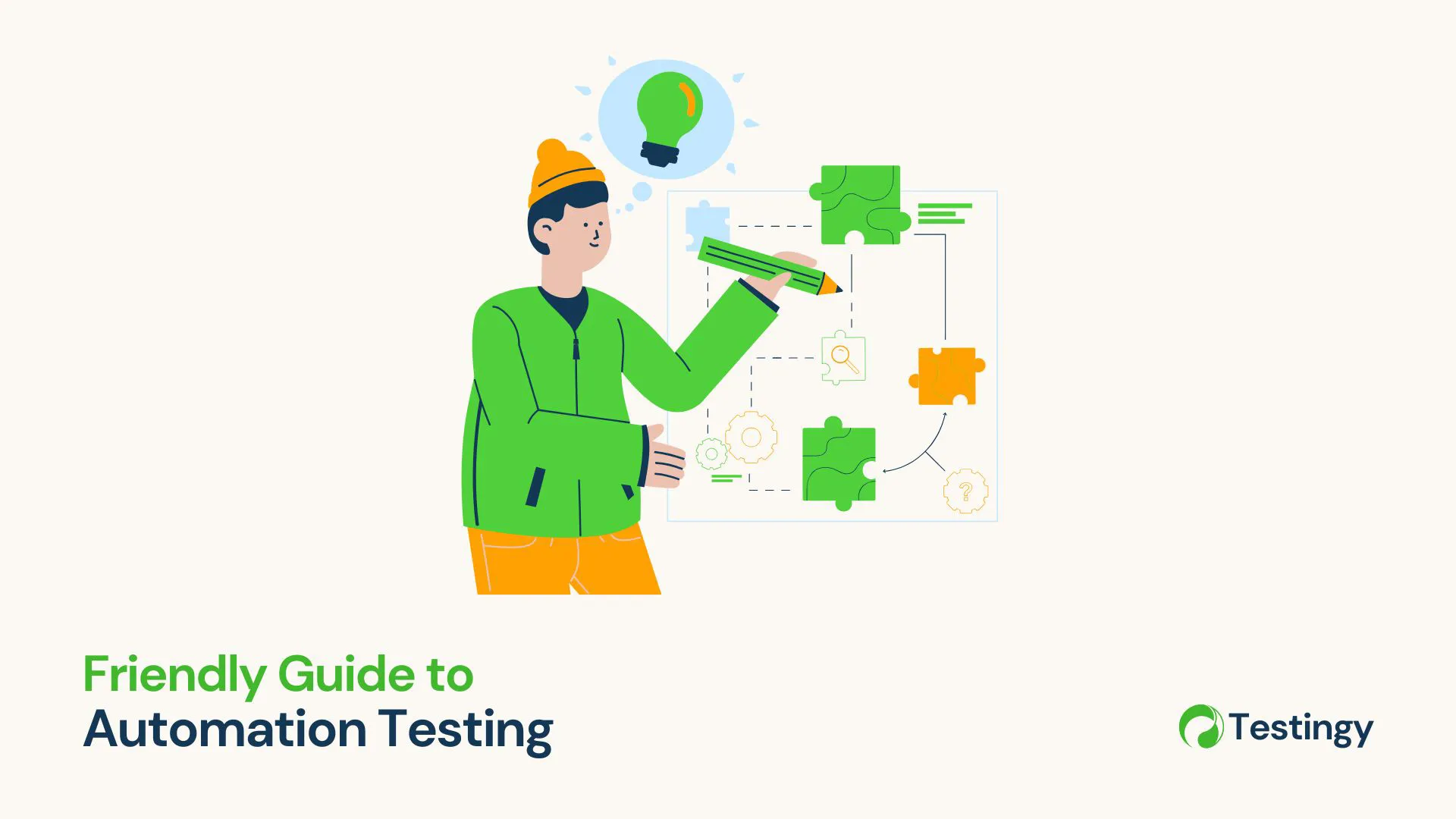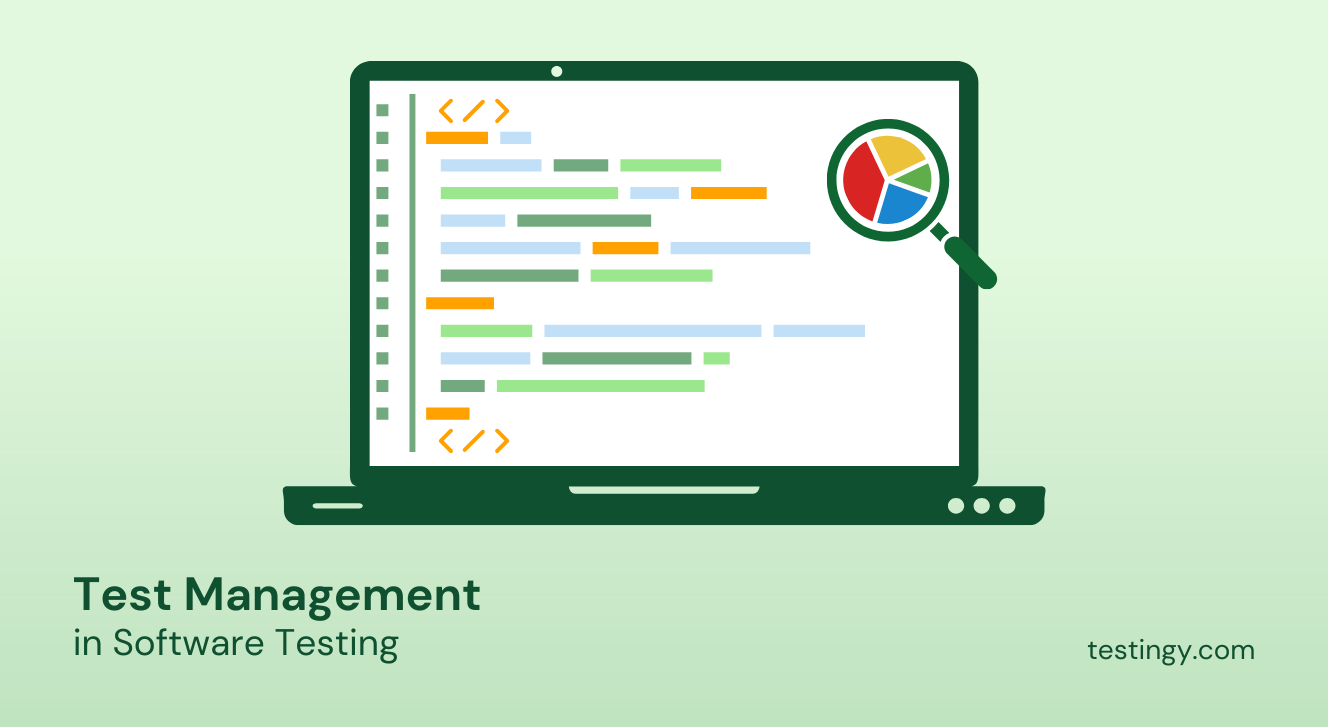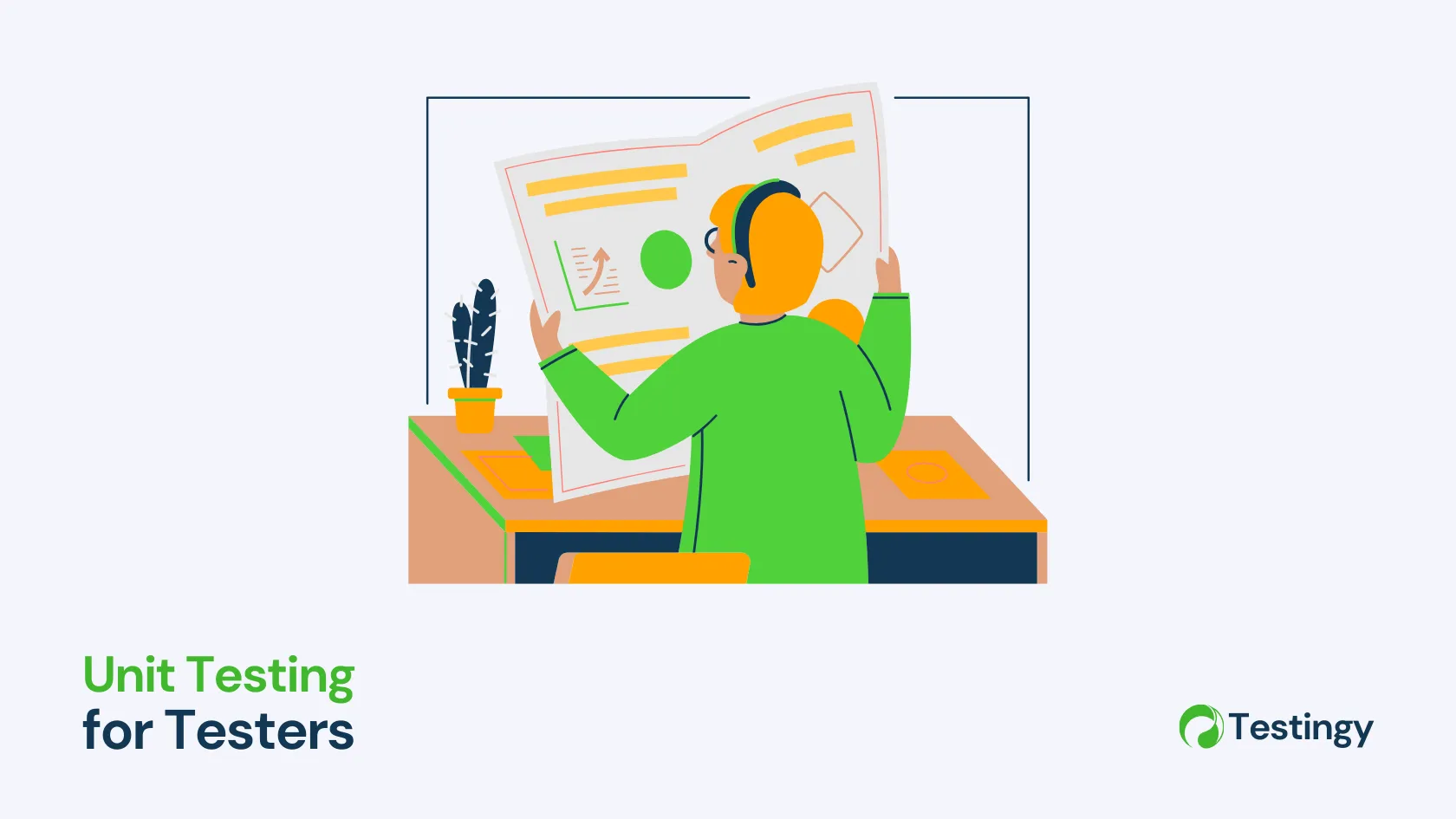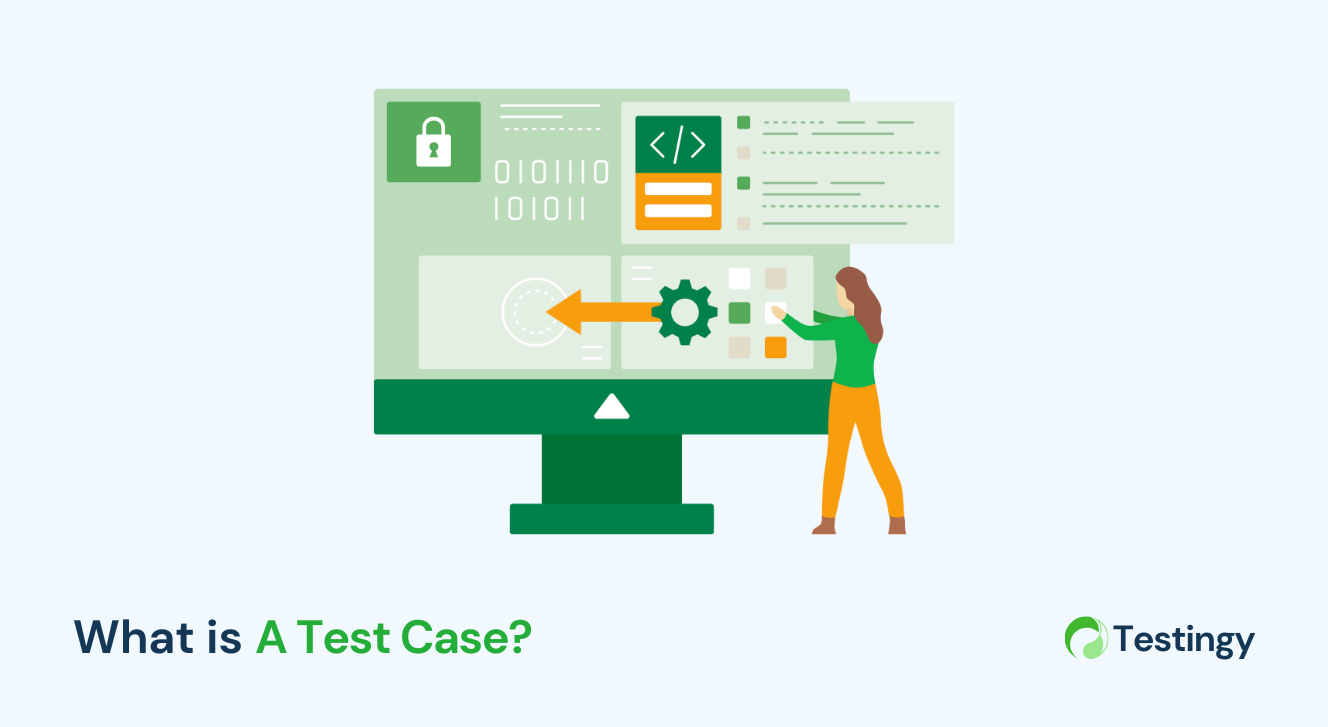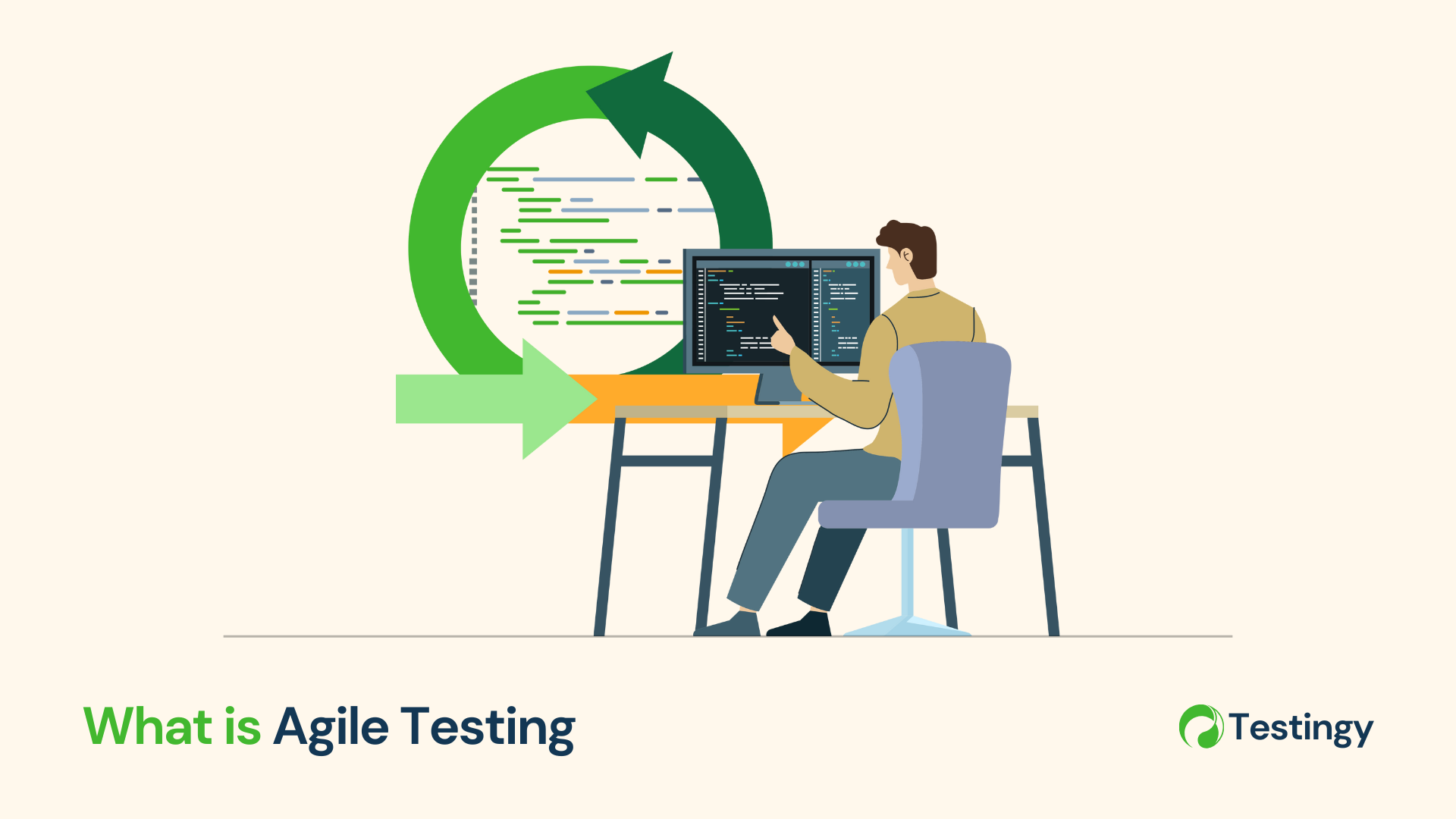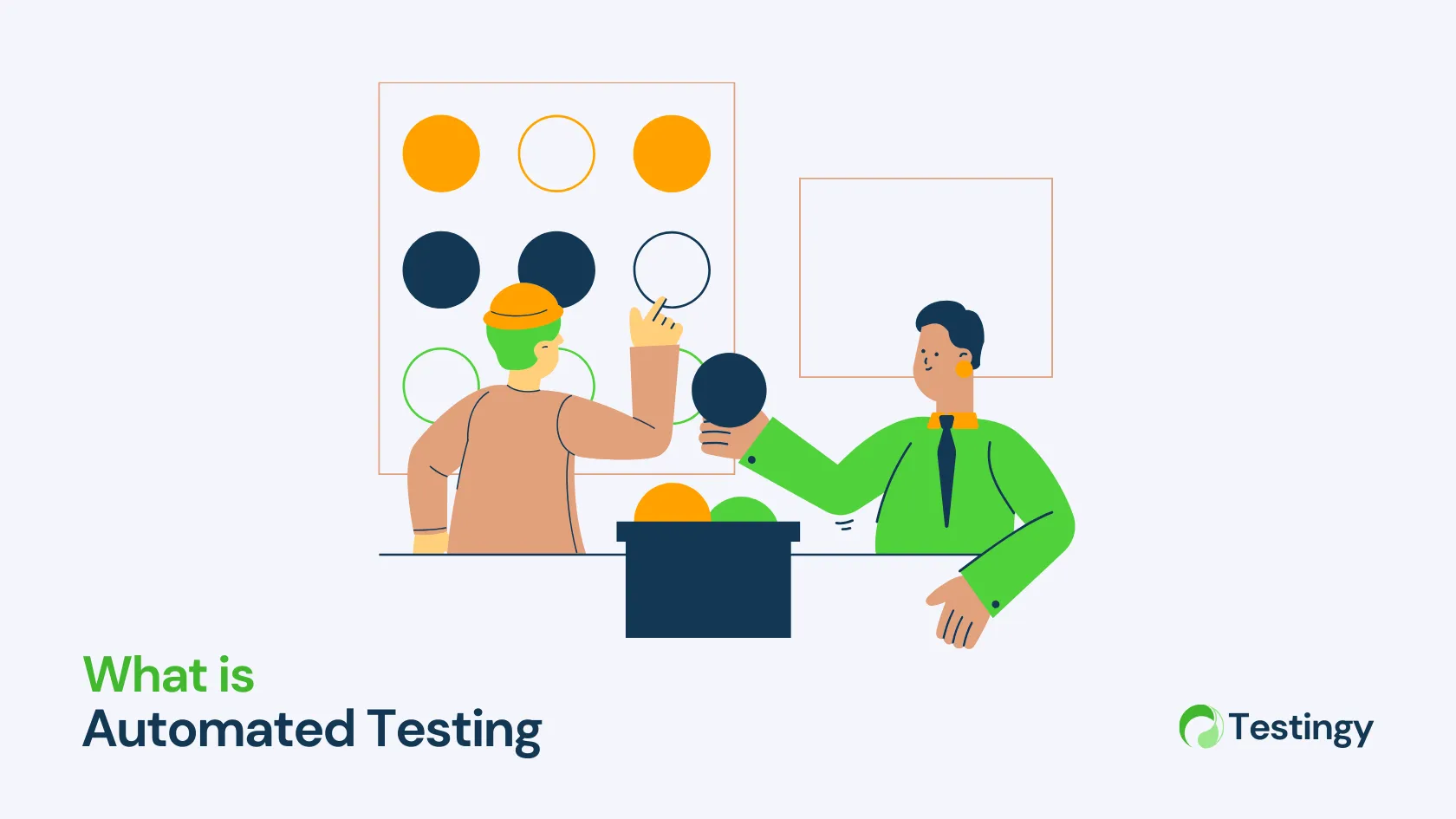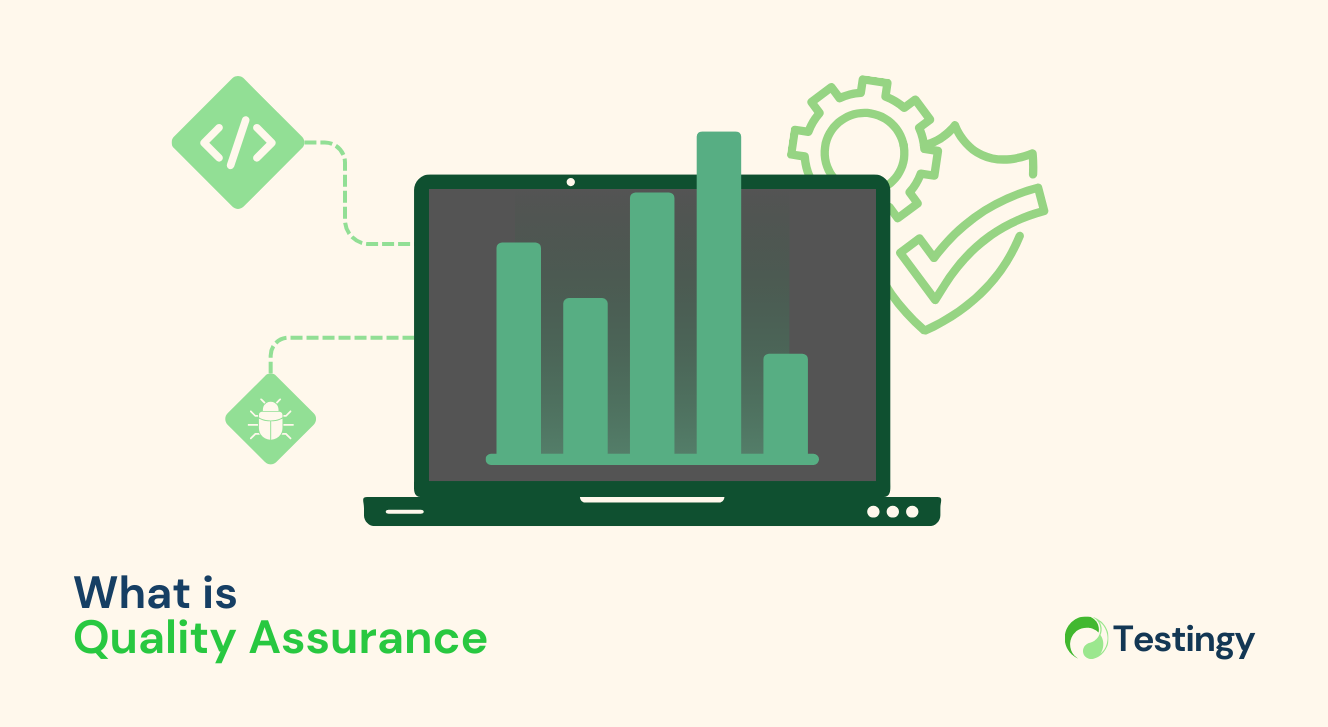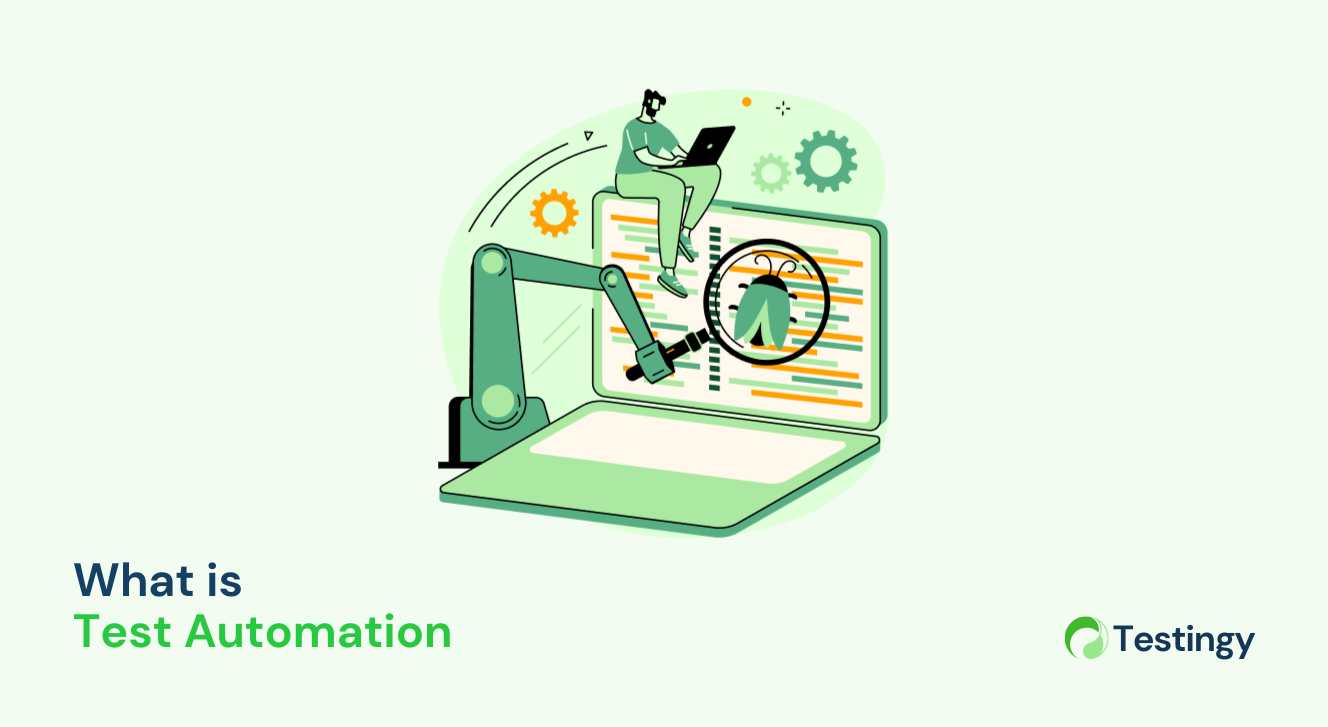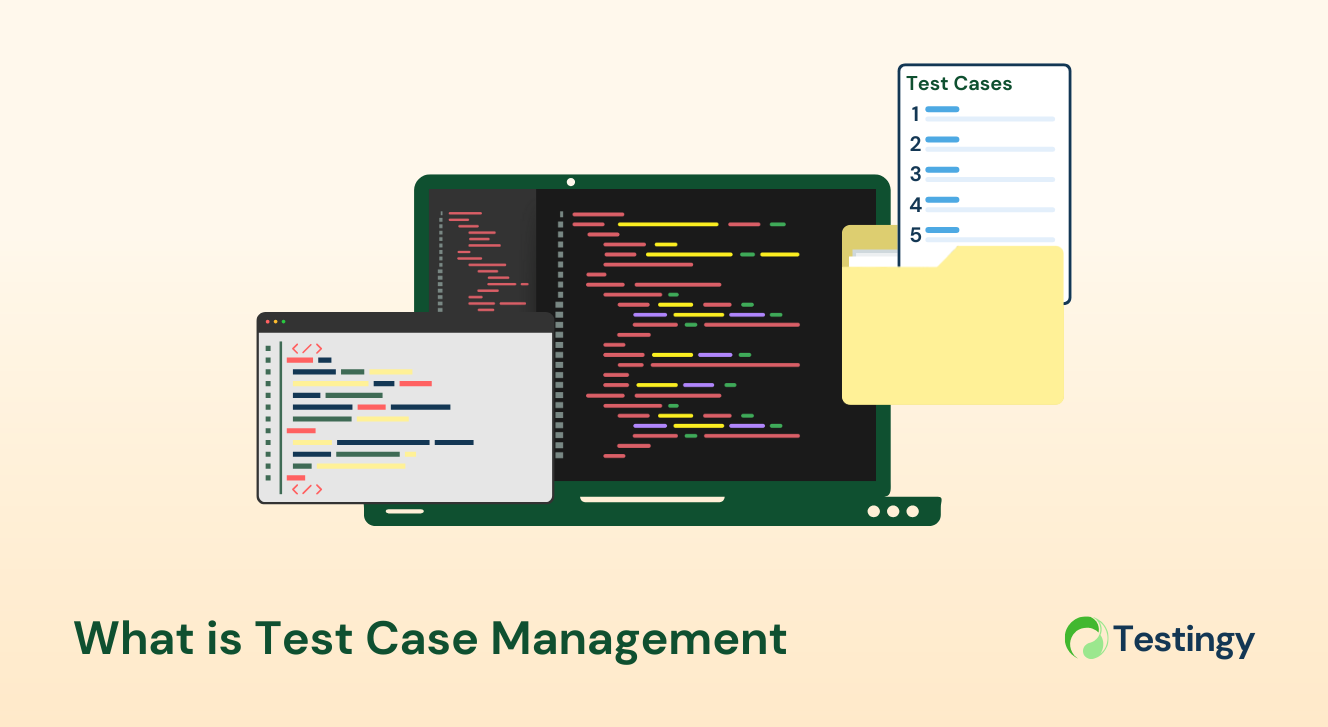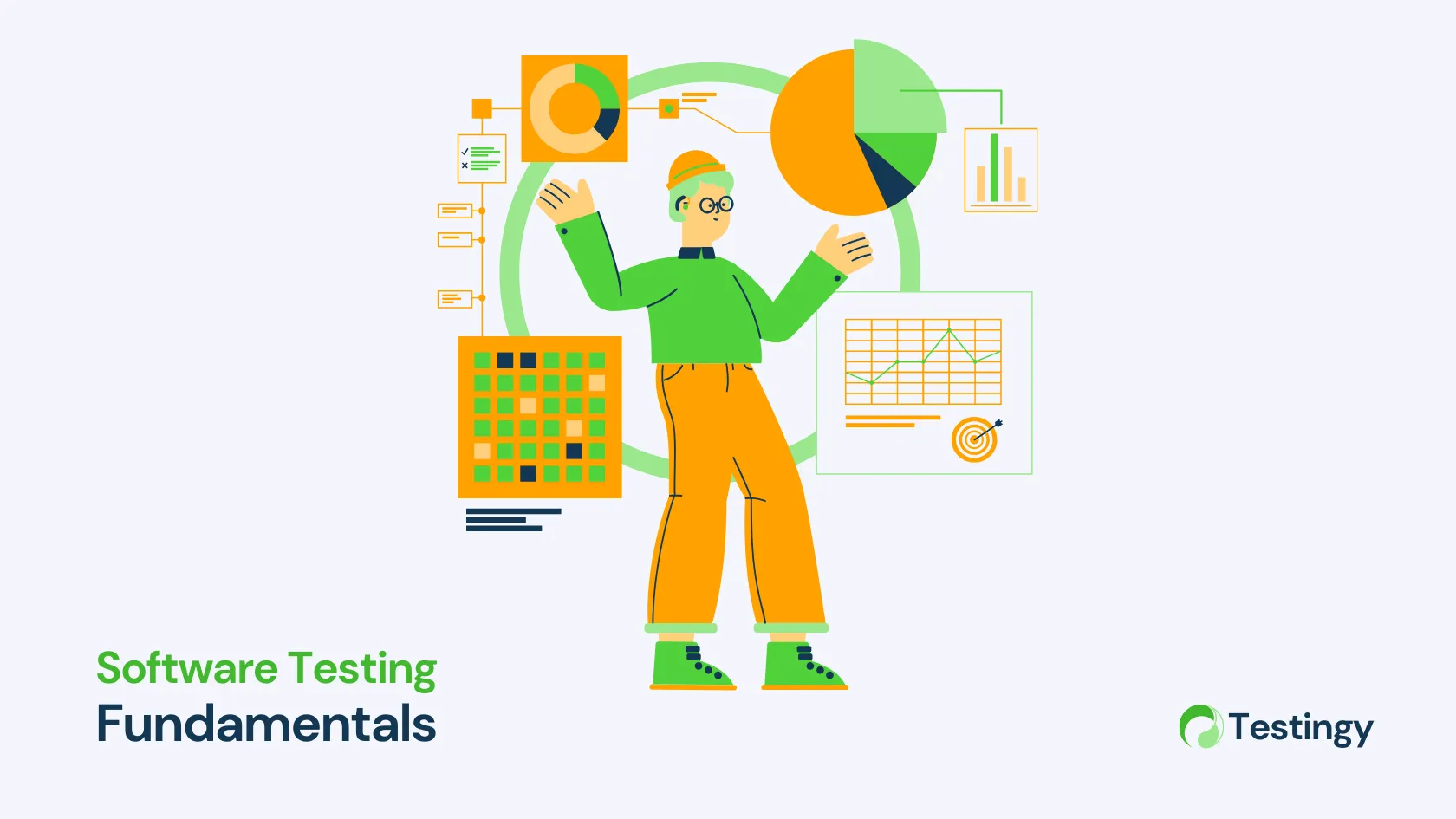Unveil the Future of AI in Software Testing & Quality Assurance
In 2023 alone, the global software testing market was valued at over $40 billion, a figure projected to grow as software complexity skyrockets with the rise of cloud computing, IoT, and AI-driven applications. Yet, as software becomes more intricate, traditional testing methods struggle to keep pace.
Enter Artificial Intelligence (AI)—a game-changer in the world of quality assurance. In the context of AI in software testing, it refers to using intelligent algorithms, such as machine learning, natural language processing, and computer vision. All to automate and enhance testing processes.
Traditional testing, reliant on manual effort and rigid automation scripts, faces significant challenges in today’s fast-paced development environment: tight deadlines, frequent updates, and the demand for flawless user experiences.
This article argues that AI is transforming software testing by boosting efficiency, improving accuracy, and expanding coverage, ultimately leading to higher-quality software.
AI Techniques and Applications in Software Testing
AI brings a suite of powerful techniques to the testing table, each addressing specific pain points in the process.
1. Machine Learning (ML)
Machine Learning (ML) is at the forefront of AI-driven testing. By analyzing historical data, ML can prioritize test cases based on predictive analytics, ensuring that high-risk areas are tested first.
Moreover, it excels at anomaly detection, spotting subtle bugs or performance bottlenecks that might elude human testers. Additionally, ML can generate automated test scripts by learning from past test outcomes, reducing the manual effort required to design tests for new features.
2. Natural Language Processing (NLP)
Natural Language Processing bridges the gap between human language and machine understanding. It can analyze user stories and requirements documents to automatically generate relevant test cases, ensuring alignment with intended functionality.
Besides, NLP also streamlines documentation by auto-generating test reports and summaries. When it comes to bug reports, NLP can sift through unstructured text to identify patterns, categorize issues, and even suggest fixes—saving testers hours of manual review.
3. Computer Vision (CV)
For applications with graphical interfaces, Computer Vision shines. It powers visual regression testing by comparing UI snapshots to detect unintended changes, ensuring pixel-perfect consistency across releases. CV also automates the testing of dynamic mobile and web UIs, adapting to shifting layouts where traditional scripts might fail.
Perhaps most impressively, it enhances accessibility testing by identifying issues like color contrast or missing alt text, making software more inclusive.
4. AI-Powered Test Automation
AI takes test automation to the next level with self-healing scripts that adapt to UI changes without constant manual updates. Intelligent test case selection uses AI to determine which tests to run based on code changes, cutting execution time.
Meanwhile, automated test data generation creates realistic datasets tailored to specific scenarios, eliminating the tedious task of crafting test inputs by hand.
Benefits of AI in Software Testing
The integration of AI into software testing yields transformative advantages, reshaping how teams ensure quality in an increasingly complex digital landscape. These benefits—spanning efficiency, accuracy, cost savings, and user experience—demonstrate why AI is becoming indispensable.
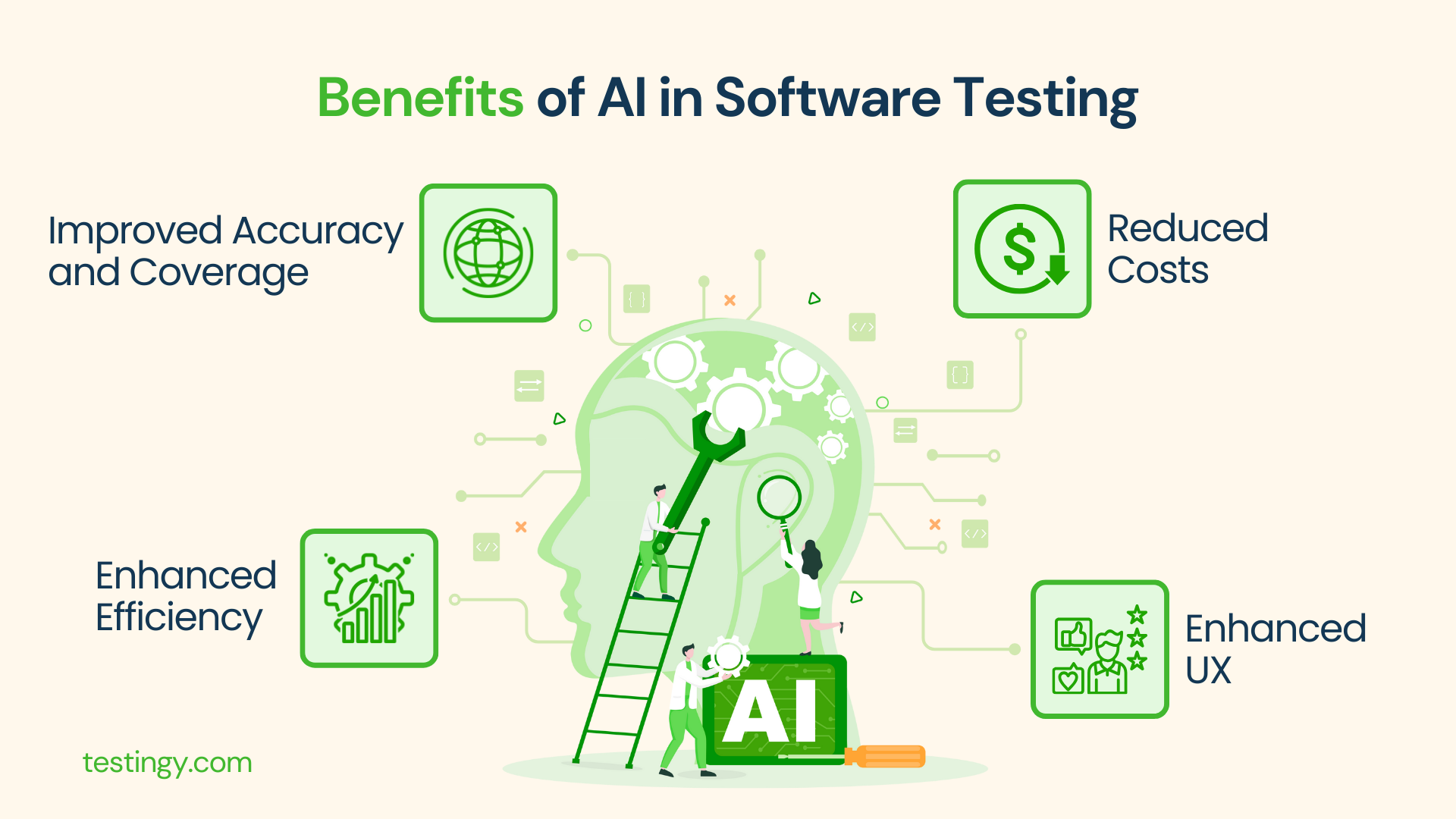
1. Increased efficiency
AI dramatically accelerates the testing process by automating repetitive tasks and optimizing workflows. For instance, traditional test execution for a large application might take days or weeks, especially during regression cycles. However, AI-driven tools can reduce this to hours by intelligently prioritizing tests based on code changes or risk profiles.
Besides, maintenance, often a bottleneck with traditional scripts breaking after UI updates, is streamlined as AI’s self-healing capabilities adapt scripts dynamically—eliminating hours of manual rework. As a result, this efficiency translates to faster feedback loops: developers receive bug reports within minutes rather than days, enabling rapid iterations.
For agile teams working on tight sprints, this speed is a game-changer and ensures deadlines are met without sacrificing quality.
2. Improved accuracy and coverage
Human testers, while skilled, are prone to oversight, especially in repetitive or complex scenarios. On the other hand, AI eliminates much of this error by applying consistent, data-driven analysis.
For example, machine learning models can detect subtle performance anomalies—like a 5% increase in API latency—that might go unnoticed in manual reviews. Coverage expands significantly as well: AI can simulate thousands of user scenarios, including rare edge cases (e.g., a user entering an unusually long string in a form field), that manual testing often skips due to time constraints.
This comprehensive approach ensures that the software is battle-tested across diverse conditions, reducing the risk of post-release failures.
3. Reduced costs
While AI tools require an initial investment in setup and training, the long-term financial benefits are far more substantial. Additionally, maintenance costs drop as self-healing scripts and intelligent test selection reduce the need for large testing teams to update scripts after every release.
Moreover, faster time to market is another cost saver: by shortening testing cycles, companies can launch products weeks earlier, capturing revenue sooner. Meanwhile, regression testing, often a resource-intensive process, becomes leaner as AI targets only the most relevant tests and cuts resource demands.
For a mid-sized firm, this might translate to savings of hundreds of thousands of dollars annually, freeing up funds for innovation or feature development.
4. Enhanced user experience
AI’s impact extends beyond the development team to the end user, delivering software that’s more reliable and inclusive. AI-powered accessibility testing, for instance, uses computer vision to ensure compliance with standards like WCAG 2.1—flagging issues such as insufficient color contrast (e.g., a gray button on a white background) or missing screen-reader tags in real time.
The result? User experience is now a lot smoother and more dependable, with fewer app crashes, faster load times, and interfaces that work for everyone. For businesses, this translates to higher customer satisfaction, fewer support tickets, and stronger brand loyalty.
Challenges and considerations
Despite its promise, AI in software testing isn’t without hurdles. Here are some of them that you should consider.
1. Data requirements and quality
AI thrives on data, requiring large, diverse datasets to train models effectively. Poor-quality or biased data can skew results, leading to unreliable tests. Ensuring data relevance in test management, especially in rapidly evolving projects, remains a persistent challenge.
2. Model training and maintenance
Training AI models is complex, requiring expertise to tune algorithms for specific testing needs. Once deployed, models demand ongoing updates to stay effective as software evolves, adding to the workload of testing teams.
3. Ethical considerations
Bias in AI models can inadvertently prioritize certain test cases over others, skewing coverage. Data privacy is another concern—testing often involves sensitive user data, and breaches could erode trust. Therefore, teams must navigate these ethical minefields carefully.
4. Integration and compatibility
Integrating AI tools into existing workflows can be disruptive, requiring adjustments to established processes. Compatibility issues between AI solutions and legacy testing frameworks may also slow adoption, particularly in organizations with entrenched systems.
The future of AI in software testing
The horizon for AI in testing is bright and full of potential, with exciting developments on the way.
1. Emerging trends
AI-driven test case generation and optimization will continue to evolve, producing smarter, leaner test suites. Autonomous testing systems—capable of designing, executing, and analyzing tests with minimal human input—are on the cusp of reality.
Enhanced AI-powered performance testing will simulate real-world usage at scale, ensuring that the software holds up under pressure.
2. The evolving role of the tester
Testers won’t be replaced but redefined. They’ll become AI trainers and curators, fine-tuning models and interpreting results. The focus will shift from repetitive execution to strategic oversight and critical thinking—skills that remain uniquely human.
3. The impact on software development
AI will accelerate development cycles by catching issues earlier and reducing testing bottlenecks. The result? Higher-quality releases are delivered faster, giving companies a competitive edge in a crowded market.
Conclusion
AI in software testing is revolutionizing the industry by delivering unprecedented efficiency, accuracy, and coverage while cutting costs and enhancing user experiences. Yet, its adoption comes with challenges—data demands, ethical concerns, and integration hurdles—that must be addressed to unlock its full potential.
As we stand on the brink of autonomous testing and smarter workflows, the transformative power of AI is undeniable. Software testing professionals should embrace this shift, exploring AI’s applications to stay ahead in an ever-evolving field.
The future of quality assurance is here—intelligent, adaptive, and ready to redefine what’s possible.
